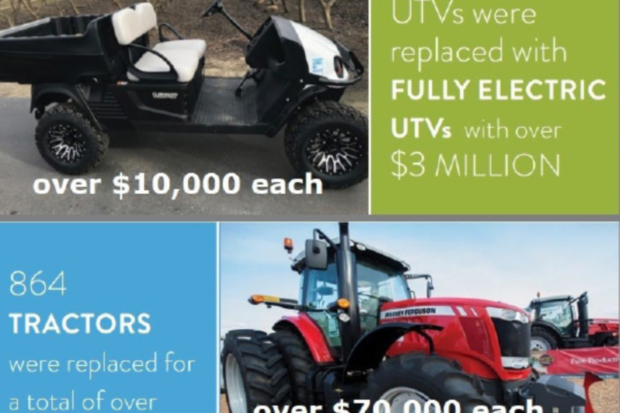
B Tom Frantz
In 2017, the California legislature extended cap-and-trade (AB 398) until 2030 as the key mechanism for reducing California’s greenhouse gas emissions. Major emitters of CO2 must buy allowances for their capped emissions annually. The money collected from the auction of these allowances was $3.2 billion in 2018 and is expected to increase significantly.
The legislature helps determine how this money is spent. In theory, it goes for reducing CO2 emissions. But there has always been the promise of air pollution reductions as well.
Unfortunately, buying and trading of allowances allows major polluters business-as-usual emissions in places like the San Joaquin Valley even while they pass the costs of cap-and-trade onto consumers. Large polluters such as the oil, gas and energy companies also received the promise of no direct greenhouse gas regulations until 2030 with AB 398.
A companion bill, AB 617, was passed to appease the people who said the legislature was too lenient on these big polluters. This bill requires some money from cap-and-trade to be allocated to low-income communities with the highest pollution levels for programs to reduce air pollution. It also said that citizen committees within each community get to decide how the money will be spent with the cooperation of local air districts and final approval by the California Air Resources Board (CARB).
For initial AB 617 implementation in 2019, about $300 million has been appropriated. Ten communities in Oakland, Richmond, Wilmington, El Centro, Sacramento, East Los Angeles, San Diego, San Bernardino, Fresno and Shafter are on the list. A steering committee has been selected for each community.
I sit on the citizen steering committee in Shafter. We have had 10 meetings over the past year. I have no idea what is going on with the other committees around the state. Fresno is somewhat similar to Shafter in that both have to deal directly with the duplicitous San Joaquin Valley Air Pollution Control District.
The members of the steering committee in Shafter consist of local residents, local environmental justice group reps, local city and county government reps, and local industry reps. Four or five members represent special interests but hide behind the label of “local resident.” One member claims to represent environmental justice concerns but is clearly a member of an oil production lobbyist group. Unfortunately, no disclosure has been required of steering committee members.
Initially, the air district patronized the Shafter committee with facts and figures describing what a great job it is doing in cleaning up the air. At subsequent meetings, the air district presented general numbers on local sources of air pollution that come from its highly speculative Valley-wide emission inventory.
At the most recent meetings, the air district has repeatedly asked residents to prioritize ongoing incentive funding programs such as money for new tractors and signs at schools suggesting no idling by parents. Meanwhile, a majority of the committee, including myself, has made specific requests and proposals that are being ignored.
We requested much more detailed pollution inventory numbers from sources around Shafter but have received nothing but vague answers. One question we asked: How many stationary internal combustion engines are pumping water and oil within a few miles of Shafter and how much air pollution do they emit? The air district lied and said that information is not available even though it has permitted every one of those engines.
We proposed a lengthy and specific monitoring plan but received no response suggesting the air district will do some extra monitoring only if it is convenient. One example: We have asked several times for a continuous PM10 monitor to look at dust levels in Shafter. The air district has totally ignored that request. It is like we are stupid and don’t deserve a response.
Because toxic emissions are also part of AB 617, we requested that a notification system be put in place so that residents can protect themselves by staying indoors when the top four most toxic pesticides are being applied nearby. The Department of Pesticide Regulation, our local agricultural commissioner, the CARB and the air district are all passing the buck on that request and saying they have no authority to do it.
Finally, we have proposed a multi-pronged program for reducing air pollution in Shafter that focuses more directly on helping local residents transition to a clean energy future. The residents have watched wealthy local farmers receive millions of dollars in incentive funding over the past few years. They are more interested in reducing pollution in the city itself by getting more homes provided with solar electricity, converting residential heating to electricity, and replacing the oldest cars in Shafter with electric vehicles.
The air district has so far twisted these proposals into looking exactly like the inadequate programs already in place. It has refused to address our proposals directly.
So now we are reaching the end of the first year, and the air district has stonewalled the steering committee requests and proposals to the point where it is too late to consider them for funding. The air district is obviously hoping the millions of available dollars ($80 million for the Valley we are told) will go to current programs by default.
The CARB, which holds the purse strings, should simply hold onto the money until the air district does things the way they were intended by the authors of AB 617.
*****
Longtime clean air advocate Tom Frantz is a retired math teacher and Kern County almond farmer. A founding member of the Central Valley Air Quality Coalition (CVAQ), he serves on its steering committee and as president of the Association of Irritated Residents. The CVAQ is a partnership of more than 70 community, medical, public health and environmental justice organizations representing thousands of residents in the San Joaquin Valley unified in their commitment to improving the health of Californians. For more information, visit www.calcleanair.org.
